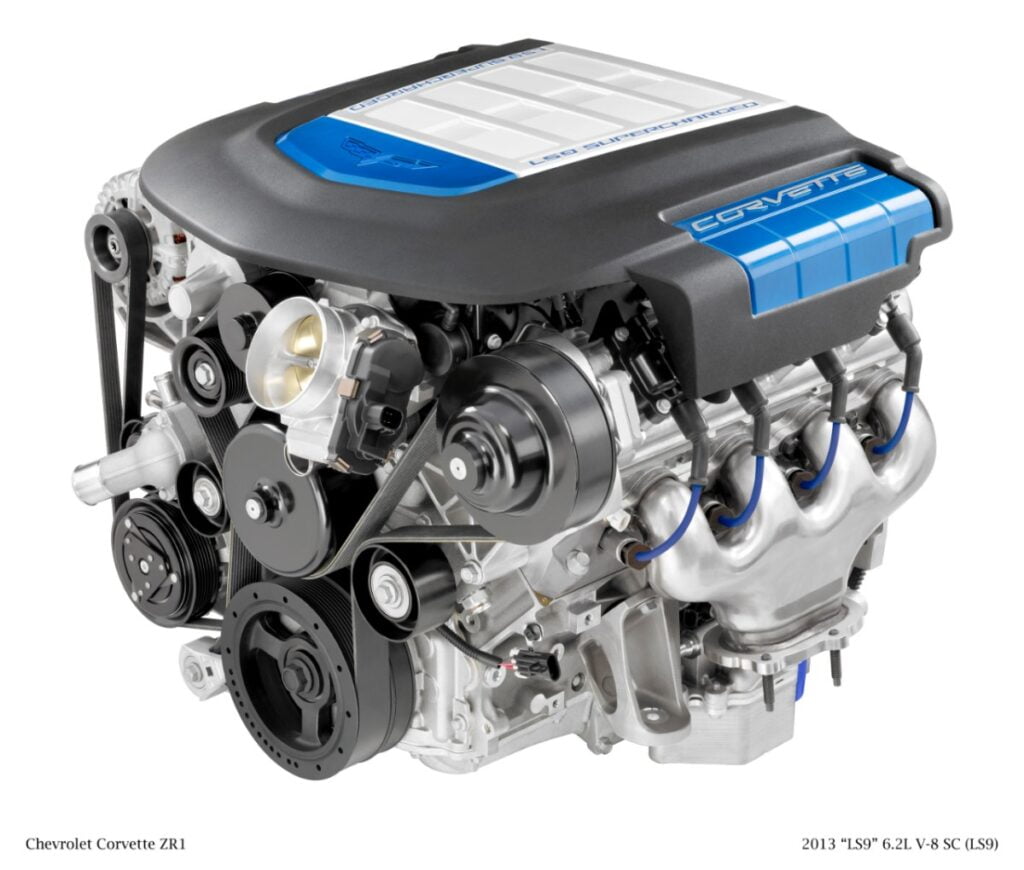- Jeep Cherokee Push Button Start Not Working: Troubleshooting Tips To Get You Back on the Road Fast! - 11 November 2023
- Haval H2 Problems: The Complete Troubleshooting Guide - 11 November 2023
- Gwm P Series Problems: Troubleshooting Guide for Common Issues - 11 November 2023
A 6.0 liter engine typically requires around 15 quarts of oil for an oil change. When it’s time for an oil change in a Ford 6.0 liter Powerstroke engine, knowing the right amount of oil to use is essential.
The oil capacity for this engine is approximately 15 quarts. By understanding the proper oil capacity, you can ensure that your engine is running smoothly and efficiently. In this guide, we will discuss the importance of oil changes for diesel trucks, the specific oil requirements for a 6.
0 liter engine, and helpful tips to complete the oil change process successfully. So, let’s dive in and learn how much oil a 6. 0 takes and how to change it properly.
Understanding The Importance Of Proper Oil Capacity For Your Diesel Truck
When it comes to maintaining the performance and longevity of your diesel truck, understanding the importance of proper oil capacity is crucial. A well-lubricated engine can make all the difference in maximizing your truck’s efficiency and avoiding potential damage. In this post, we will delve into the role of oil in engine performance, the consequences of incorrect oil capacity, and how to ensure you are using the right amount of oil. So, let’s dive in.
The Role Of Oil In Engine Performance And Longevity
Oil is the lifeblood of your diesel truck’s engine. It performs multiple vital functions that help to keep your engine running smoothly and efficiently:
- Lubrication: Oil forms a protective layer between moving parts, reducing friction and preventing metal-to-metal contact. This minimizes wear and tear, extending the life of your engine.
- Cooling: Oil helps to dissipate heat generated by the engine. It absorbs the heat and carries it away, preventing overheating and potential engine damage.
- Cleaning: Oil carries away dirt, debris, and combustion byproducts, preventing them from accumulating in the engine. This ensures optimal performance and reduces the risk of clogging.
- Sealing: Oil seals the gaps between cylinders, pistons, and other components, preventing leaks and maintaining compression, which is essential for efficient combustion.
- Corrosion protection: Oil contains additives that protect engine components from corrosion and rust, especially in areas where moisture may be present.
Consequences Of Incorrect Oil Capacity
Using the correct oil capacity for your diesel truck is vital to avoid potential consequences that could negatively impact your engine’s performance and longevity:
- Insufficient lubrication: If you use less oil than the recommended capacity, there may not be enough lubrication between moving parts. This can result in increased friction, heat, and wear, leading to premature engine failure.
- Increased heat buildup: Insufficient oil means less coolant capacity, which can result in increased heat buildup. This can lead to overheating, decreased performance, and potential damage to engine components.
- Inadequate cleaning: Insufficient oil may not be able to carry away dirt and debris effectively. This can lead to the buildup of sludge and deposits, restricting oil passages and potentially causing engine damage.
- Potential leaks: Using more oil than the recommended capacity can put excess pressure on seals and gaskets, leading to leaks. Oil leaks can not only lead to oil loss but can also contaminate other engine components.
Ensuring Proper Oil Capacity For Your Diesel Truck
Ensuring your diesel truck has the correct oil capacity is a straightforward process. Refer to your truck’s manual or consult a trusted mechanic to determine the exact amount of oil needed for your specific model and engine.
Here are some general guidelines to follow when it comes to oil capacity:
- First, drain the old oil completely and replace the oil filter to ensure a fresh start.
- Use a measuring container to pour the recommended amount of oil into the engine.
- Check the oil level using the dipstick, making sure it falls within the acceptable range.
- If necessary, add small amounts of oil gradually until the level is correct. Avoid overfilling.
Remember, using the correct oil capacity is essential for optimal engine performance and longevity. Regularly checking the oil level and adhering to proper maintenance intervals will help keep your diesel truck running smoothly for years to come.
Determining The Oil Capacity For A Ford Powerstroke 6.0 Engine
If you own a Ford Powerstroke 6.0 engine, you might be wondering how much oil it takes. Determining the oil capacity is an essential part of maintaining your engine’s health and ensuring optimal performance. In this article, we will explore the recommended oil capacity by the manufacturer and factors that can affect it.
Exploring The Recommended Oil Capacity By The Manufacturer
The recommended oil capacity for a Ford Powerstroke 6.0 engine can vary depending on several factors. However, the standard oil capacity for most models of this engine is approximately 15 quarts. It’s important to note that this estimate may vary slightly, so it’s always a good idea to consult your vehicle’s owner’s manual or contact a certified mechanic for the most accurate information.
Factors That Can Affect The Oil Capacity
Several factors can affect the oil capacity of a Ford Powerstroke 6.0 engine. These factors include:
- Oil filter type: Different oil filter types can affect the overall oil capacity. It’s important to ensure that you are using the correct oil filter specified by the manufacturer.
- Oil cooler system: Some Ford Powerstroke 6.0 engines are equipped with an oil cooler system. This system can impact the amount of oil required for optimal performance.
- Engine modifications: If you have made any modifications to your engine, such as aftermarket upgrades or performance enhancements, it can affect the oil capacity requirements. It’s crucial to consider these modifications when determining the appropriate amount of oil for your engine.
- Oil change procedure: The oil change procedure can also impact the oil capacity. Factors such as complete draining, proper installation of the new oil filter, and accurate measurement techniques can ensure the correct oil capacity is maintained.
It’s important to keep these factors in mind when determining the oil capacity for your Ford Powerstroke 6.0 engine. Following the manufacturer’s recommendations and considering any modifications or systems in place will help ensure that your engine is properly lubricated and performs optimally.
Step-by-step Guide To Checking The Oil Capacity In Your Diesel Truck
Checking the oil capacity in your diesel truck is an essential part of regular maintenance. Knowing the correct oil level ensures optimal engine performance and longevity. In this step-by-step guide, we will walk you through the process of checking the oil capacity in your diesel truck, enabling you to keep your vehicle running smoothly for miles to come.
Preparing The Truck For Oil Capacity Check
Before you begin the oil capacity check, it is important to ensure that your truck is in a suitable condition. Follow these steps:
- Make sure your truck is parked on a level surface.
- Allow the engine to cool down for at least 10 minutes.
- Engage the parking brake to secure the truck.
Identifying The Oil Dipstick And Reading The Oil Level
The oil dipstick is a crucial tool for checking the oil level in your truck. Here’s how to locate and read it:
- Open the hood of your truck and locate the engine oil dipstick.
- Pull out the dipstick and wipe it clean using a cloth or paper towel.
- Insert the dipstick back into the oil reservoir until it is fully seated.
- Withdraw the dipstick again and observe the oil level.
- Check the oil level against the markings on the dipstick. It should fall between the “full” and “low” indicators.
How To Add Or Remove Oil To Achieve The Proper Capacity
If the oil level is below the recommended range, you will need to add oil, and if it exceeds the range, you will need to remove some oil. Here’s how to achieve the proper oil capacity:
- If you need to add oil:
- Locate the oil filler cap, usually found on the top of the engine.
- Unscrew the cap and carefully pour in the recommended amount of oil.
- After pouring, wait for a few moments to allow the oil to settle.
- If you need to remove oil:
- Use an appropriate oil extraction tool or drain the excess oil using the drain plug.
- Refer to your truck’s manual for specific instructions on oil removal.
Remember to double-check the oil level using the dipstick after adding or removing oil to ensure you’ve reached the proper capacity.
Regularly monitoring and maintaining the correct oil capacity in your diesel truck is crucial for engine performance and longevity. By following this step-by-step guide, you can confidently check and adjust the oil level in your truck, keeping it running smoothly for years to come.
Factors To Consider When Choosing The Right Oil For Your Diesel Truck
Properly maintaining your diesel truck is essential to ensuring its longevity and optimal performance. When it comes to choosing the right oil for your Ford Powerstroke 6.0 engine, there are several important factors to consider. From understanding oil viscosity to knowing the recommended oil types for your engine, let’s explore what you need to know to make an informed decision.
Understanding Oil Viscosity And Its Importance For Your Engine
Oil viscosity refers to the oil’s thickness or resistance to flow. It plays a crucial role in protecting your engine components and ensuring smooth operation. Different engines have specific oil viscosity requirements, and using the wrong oil can lead to poor performance and potential engine damage.
The Society of Automotive Engineers (SAE) rates oil viscosity using a two-number system. The first number indicates the oil’s cold temperature performance, while the second number represents its high-temperature performance. For instance, a common oil viscosity for the Ford Powerstroke 6.0 engine is 15W-40, where “15W” stands for its cold temperature viscosity and “40” represents its high-temperature viscosity.
Recommended Oil Types For Ford Powerstroke 6.0 Engines
When selecting oil for your Ford Powerstroke 6.0 engine, it’s crucial to follow the manufacturer’s recommendations. Ford recommends using oils that meet the API (American Petroleum Institute) specifications of CJ-4 or higher. These oils are specifically formulated for diesel engines and offer improved protection against wear, deposits, and oxidation.
Additionally, it’s essential to choose oils that meet the performance requirements of the Ford Material Engineering Specification (FMES) standards to ensure optimal engine performance. Examples of commonly used oils that meet these specifications include Mobil Delvac 1300 Super 15W-40 and Shell Rotella T4 15W-40.
Additional Additives And Their Effects On Oil Capacity
While the Ford Powerstroke 6.0 engine has an oil capacity of approximately 15 quarts, it’s crucial to consider the impact of additional additives on the oil’s capacity. Some oil additives, such as oil stabilizers or friction modifiers, can increase the overall volume of oil required for your engine. On the other hand, certain engine treatments or fuel additives might reduce the oil capacity by diluting the oil or lowering the oil level in the crankcase.
It’s important to carefully read and follow the instructions provided by the additive manufacturer to ensure the proper oil capacity is maintained. Whenever adding additives to your engine oil, consider consulting with a trusted mechanic or referring to the manufacturer’s recommendations.
Common Mistakes And Pitfalls When Determining The Oil Capacity For A Diesel Truck
Determining the correct oil capacity for your diesel truck is crucial for maintaining its performance and longevity. However, many truck owners make common mistakes and fall into pitfalls when trying to determine the right amount of oil their vehicles need. In this section, we will discuss two of the most common mistakes – overfilling or underfilling the oil, as well as the consequences of using the wrong oil capacity. We will also provide some tips to help you avoid these errors and ensure your diesel truck gets the right amount of oil it needs.
Overfilling Or Underfilling The Oil
One of the most common mistakes truck owners make is overfilling or underfilling the oil during an oil change. Overfilling can lead to increased pressure inside the engine, causing oil leaks, gasket damage, and even engine failure. On the other hand, underfilling can result in insufficient lubrication, leading to excessive friction and wear on crucial engine components.
To avoid overfilling or underfilling your diesel truck’s oil, it is essential to follow the manufacturer’s recommendations regarding oil capacity. These guidelines can usually be found in your vehicle’s owner’s manual or by contacting the manufacturer directly. It’s worth noting that different truck models may have different oil capacities, so make sure to check the specifications for your specific make and model.
The Consequences Of Using The Wrong Oil Capacity
Using the wrong oil capacity for your diesel truck can have serious consequences on its overall performance and lifespan. If you use less oil than recommended, the lubrication of crucial engine parts may be compromised, leading to increased friction and accelerated wear. This can result in decreased engine efficiency, decreased fuel economy, and possibly even engine damage.
On the other hand, using more oil than recommended can cause excessive pressure inside the engine, leading to leaks, seals failure, and even damage to the engine block. Additionally, using the wrong oil capacity may also void any warranty or extended coverage you have on your truck.
Tips For Avoiding Oil Capacity Errors
To ensure you don’t make any oil capacity errors when changing the oil in your diesel truck, follow these tips:
- Always refer to the manufacturer’s guidelines or owner’s manual for the correct oil capacity.
- Double-check the specifications for your specific make and model, as different trucks may have different oil capacities.
- Use a high-quality oil filter to complement the new oil and ensure proper filtration.
- When draining the old oil, allow enough time for it to fully drain out to avoid residual oil affecting the accuracy of the oil capacity measurement.
- When adding new oil, do so in small increments, checking the dipstick periodically to ensure you don’t overfill.
- If you are unsure about the correct oil capacity or have any doubts, consult a professional mechanic or contact the manufacturer for assistance.
By following these tips, you can avoid common oil capacity errors and ensure that your diesel truck is receiving the appropriate amount of oil for optimal performance and longevity.

Credit: www.towneastford.com
Frequently Asked Questions For How Much Oil Does A 6.0 Take?
How Much Oil Does A 6.0 Ls Take?
A 6. 0 LS engine typically requires approximately 15 quarts of oil during an oil change. Make sure to consult the owner’s manual or a reliable source to confirm the exact oil capacity for your specific vehicle model.
What Oil Does 6.0 Powerstroke Use?
A 6. 0 Powerstroke engine uses approximately 15 quarts of oil when changing oil. Ensure to refer to the Ford Powerstroke Diesel Forum or check the Powerstroke Oil Filter Details for more information on oil capacity. Follow the guide for your diesel truck’s oil change.
How Many Gallons Does A 6.0 Powerstroke Take?
The 6. 0 Powerstroke engine typically requires 15 quarts of oil for an oil change. It is important to follow the manufacturer’s guidelines to maintain optimal performance.
How Much Oil Does A 6.0 Lq4 Take?
The 6. 0L LQ4 engine typically takes around 15 quarts of oil when changing it.
How Much Oil Does A 6.0 Engine Take?
A 6. 0 engine typically takes around 15 quarts of oil when changing it.
Conclusion
Knowing how much oil a 6. 0 takes is crucial for maintaining the optimal performance of your diesel truck. With a recommended capacity of around 15 quarts during an oil change, it’s important to follow the manufacturer’s guidelines. Regularly monitoring and changing your oil ensures the longevity of your engine and enhances its efficiency.
Don’t underestimate the importance of this simple yet essential maintenance task. Take care of your vehicle, and it will take care of you.


